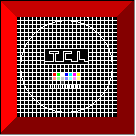
 |
4. The 'View' menu |
The third (and last) of the 'standard' menus of a typical Windows program is the 'View' menu. This menu is mostly used for setting the 'look & feel' of an application.
 |
4.1 Toolbar |
Since some people dont like the use of buttons or if someone needs a greater clientarea, the toolbar can switched on and off. A little checksign to the left of 'Toolbar' indicates the state of the toolbar.
If you need a greater clientarea and the toolbar visible too, then there are even more possibilities to save space: either dock the toolbar to any border of the main window or make the toolbar a floating toolbar (see figure). Both is done with the 'drag & drop' mechanism of Windows.
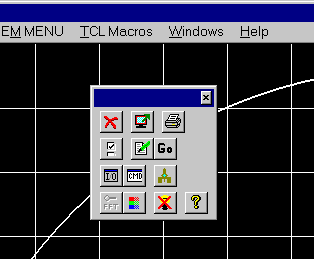 |
4.2 Statusbar |
Although in some cases the statusbar provides useful information (see also remarks in chapter 1.3 Overview) there might be the need to toggle it off e.g. if you need a greater clientarea.
4.3 Toggle overlay transparency |
First of all what means 'overlay' ? The overlay is a way to display things like borders or textstrings or scalebars or ... over the displayed data without any interaction with the data. In principle there are two levels, one for the greyvalues and one for the colors (= the overlay level), which are displayed simultaneously, but with no interaction between them. The greyvalue level is the background level and the overlay level is in the foreground.
Toggling the overlay transparency now means, that the background is visible through the foreground, if the transparency is set to on (see figure).
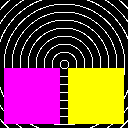 |
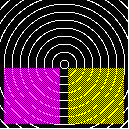 |
|
| Non transparent | Transparent |
Button: you can also toggle the overlay transparency with ![]() in the toolbar.
in the toolbar.
4.4 Screensaver |
If you need to darken your display(s) in a quick and easy way, you can either use the 'Screensaver' submenu or the <F5> functionkey at the keyboard.
Which screensaver is used, is determined in the 'Change Configuration ...' submenu.
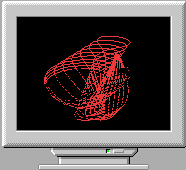 |
Button: you can also activate the screensaver with ![]() in the toolbar or with the function key F5.
in the toolbar or with the function key F5.
Note: EMMENU calls the screen saver through the shell-execute-mechanism. Therefore it is required that the suffix scr is connected with screen saver. This is the default setting in Windows NT after installation. Unfortunately some programs use the scr for their own purposes and connect this suffix to their own application. In that case the start of the screen saver will fail. To check that, start the Windows NT explorer and change to the directory C:\winnt\system32 and have a look at scrnsave.scr or any other file with suffix scr. The type should be 'Screen Saver' as shown below.
 |
Last update: